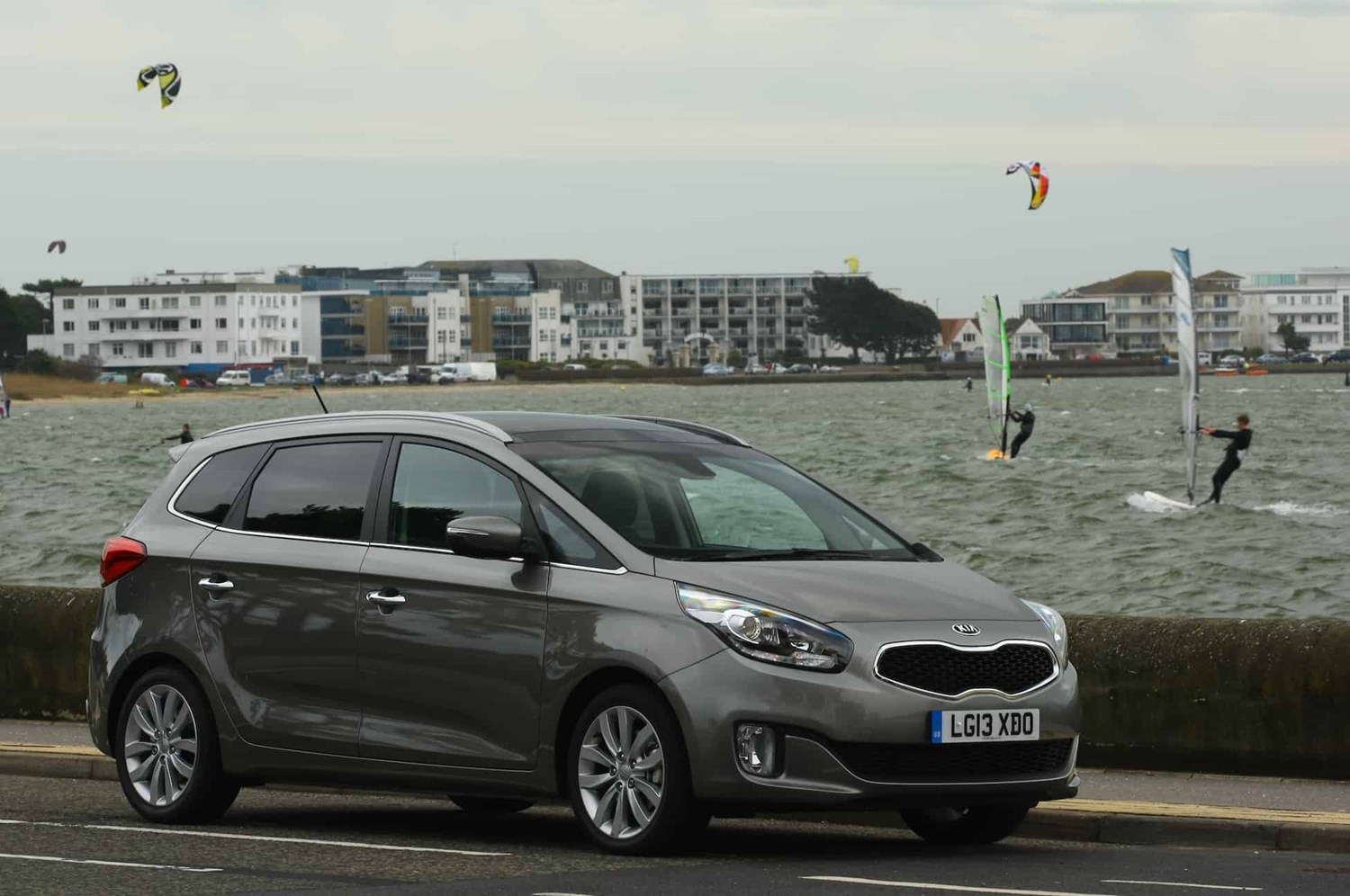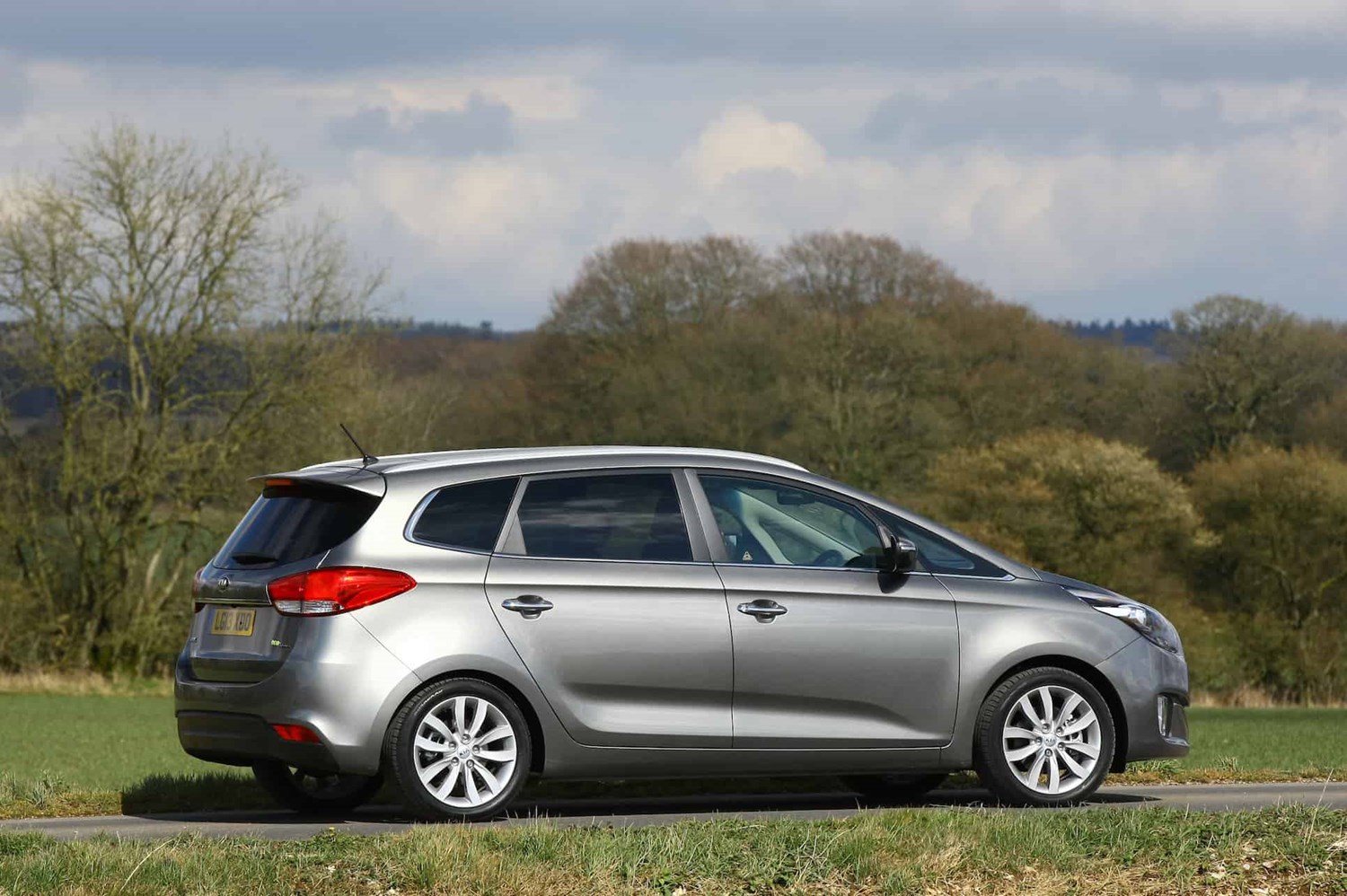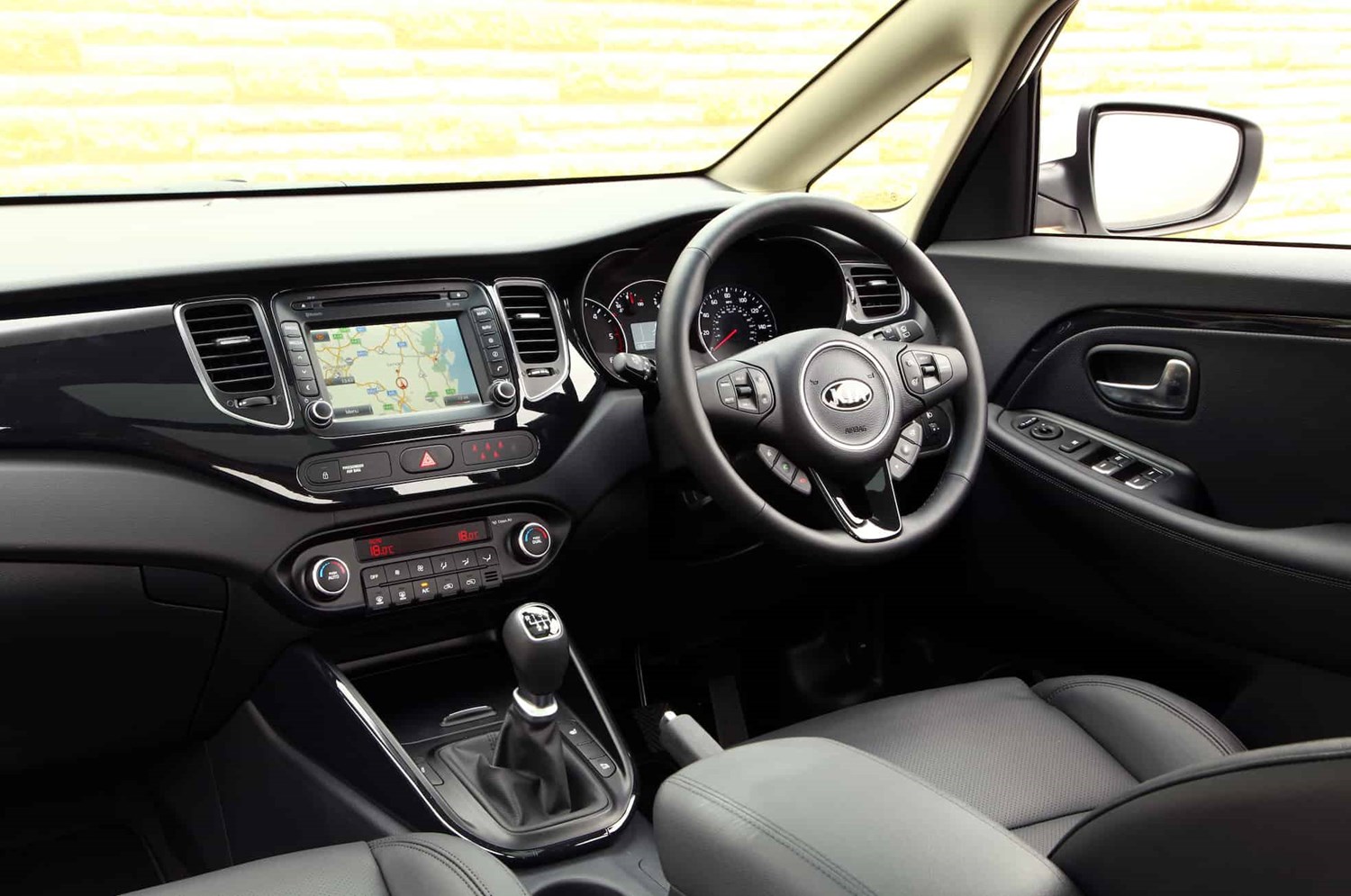Current model
As mentioned before, the latest, third generation of the Kia Carens began production in 2013. However, the model did receive an update in 2016 – it got a redesigned facia, wheels and lights. The recognisable ‘Tiger Nose’ grille was also enlarged.
Get the Carens out on the road and buyers will find an MPV which, while not setting any benchmarks in terms of the driving experience, is very comfortable. In addition, wind noise and tyre roar are kept to a minimum. That being said, the car doesn’t offer much confidence when it comes to steering – there isn’t much feedback – and there’s presence of problematic body lean, where a Ford S-Max dominates.
In 2019, Kia stopped production of the Carens, making the used market the only place to turn to for someone wanting to purchase one.
Value for money
Due to the Carens no longer being on sale new, you need to take a look at the used market. Cheapest examples of the first-generation model can be had for as little as £450 – an obvious bargain. Lowest prices for second generation Carens aren’t much more either.
Those wanting a third generation one should expect to pay upwards of £4,000 – not that bad by any means.
Looks and image
Looks are never really an MPV’s forte, but the Carens does an acceptable job in this department. While beauty is in the eye of the beholder, we think it doesn’t look amazing, nor ugly – somewhere in the middle. The model won’t find itself on any bedroom wall posters, but also isn’t likely to offend anyone. Most MPV buyers will be satisfied with the car’s design.





